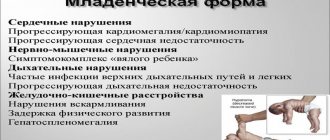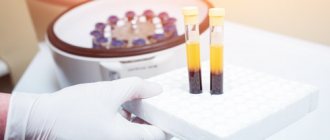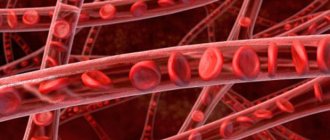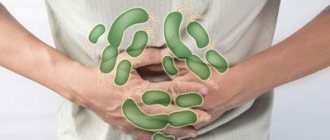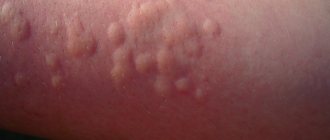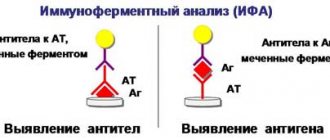Lipid metabolism is the metabolism of fats in the human body, which is a complex physiological process, as well as a chain of biochemical reactions that occur in the cells of the whole body.
There are neutral categories of lipids: cholesterol (CS) and triglycerides (TG), whose molecules do not dissolve in liquid.
In order for cholesterol and triglyceride molecules to move through the bloodstream, they stick to protein molecules, which are transporters in the bloodstream.
With the help of neutral lipids, bile acids and steroid hormones are synthesized, and molecules of neutral lipids fill each cell of the membrane with energy.
By binding to low molecular density proteins, lipids are deposited on the vascular membranes in the form of a lipid stain, followed by the formation of an atherosclerotic plaque.
Lipoprotein composition
Lipoprotein (lipoprotein) consists of a molecule:
- Esterified form of CS,
- Non-esterified form of cholesterol,
- Triglyceride molecules,
- Protein and phospholipid molecules.
Components of proteins (proteids) in the composition of lipoprotein molecules:
- Apoliprotein (apoliprotein),
- Apoprotein (apoprotein).
The entire process of fat metabolism is divided into two types of metabolic processes:
- Endogenous fat metabolism
- Exogenous lipid metabolism.
If lipid metabolism occurs with cholesterol molecules that enter the body with food, then this is an exogenous metabolic pathway. If the source of lipids is their synthesis by liver cells, then this is an endogenous metabolic pathway.
There are several fractions of lipoproteins, of which each fraction performs certain functions:
- Chylomicron molecules (CM),
- Very low molecular density lipoproteins (VLDL),
- Low molecular density lipoproteins (LDL),
- Medium molecular density lipoproteins (MDL),
- High molecular density lipoproteins (HDL),
- Triglyceride (TG) molecules.
The metabolic process between lipoprotein fractions is interconnected.
Cholesterol and triglyceride molecules are needed:
- For the functioning of the hemostatic system,
- To form the membranes of all cells in the body,
- For the production of hormones by endocrine organs,
- For the production of bile acids.
Cholesterol is involved in many metabolic processes in the human body.
How is fat formed in the human body?
Exogenous fat and chylomicron lipoprotein lipase pathway
The human body can form lipids or triglycerides not only from fats coming from food, but also from carbohydrates and proteins. Fats from incoming food enter the gastrointestinal tract, are absorbed in the small intestine, undergo a transformation process and are broken down into fatty acids and glycerol. There are also internal, endogenous fats that are synthesized in the liver. Fatty acids are a source of large amounts of energy, being a kind of body “fuel”.
They are absorbed into the blood and, with the help of special transport forms - lipoproteins, chylomicrons, are carried to various organs and tissues. Fatty acids can again be used for the synthesis of triglycerides and fat, and if they are in excess, they can be stored in the liver and in adipose tissue cells - adipocytes. It is adipocytes with a large supply of triglycerides that create discomfort for a person and are manifested by excess deposits of subcutaneous fat and excess weight. Fat deposits can also be formed from carbohydrates.
Glucose and fructose entering the blood with the help of the hormone insulin can be deposited in the form of triglycerides in the liver and cells. Proteins ingested from food can also be transformed into triglycerides through a cascade of transformations: proteins are broken down into amino acids, absorbed into the blood, penetrate into the liver, converted into glucose and, under the action of insulin, become triglycerides stored in adipocytes. This is a very simplified way to imagine the process of lipid formation in the human body.
Functions of lipoprotein molecules
The structure of the lipoprotein molecule consists of a core, which includes:
- Esterified cholesterol molecules,
- Triglyceride molecules,
- Phospholipids, which cover the core in 2 layers,
- Apoliprotein molecules.
The lipoprotein molecule differs from each other in the percentage of all components.
Lipoproteins differ depending on the presence of components in the molecule:
- To size,
- According to density,
- According to its properties.
Indicators of fat metabolism and lipid fractions in the blood plasma:
| lipoprotein | cholesterol content | apoliprotein molecules | molecular density unit of measure grams per milliliter | molecular diameter |
| chylomicron (CM) | TG | Al, | less than 1,950 | 800,0 — 5000,0 |
| A-l1, | ||||
| · A-IV, | ||||
| B48, | ||||
| Cl, | ||||
| · C-l1, | ||||
| · C-IIL. | ||||
| residual chylomicron molecule (CM) | TG + ether CS | B48, | less than 1.0060 | more than 500.0 |
| · E. | ||||
| VLDL | TG | Cl, | less than 1.0060 | 300,0 — 800,0 |
| · C-l1, | ||||
| · C-IIL, | ||||
| · V-100, | ||||
| · E. | ||||
| LPSP | cholesterol ester + TG | Cl, | from 1.0060 to 1.0190 | 250,0 — 3500,0 |
| · C-l1, | ||||
| · C-IIL, | ||||
| · V-100, | ||||
| · E | ||||
| LDL | TG and ether HS | V-100 | from 1.0190 to 1.0630 | 180,0 — 280,0 |
| HDL | TG + cholesterol ester | Al, | from 1.0630 to 1.210 | 50,0 — 120,0 |
| A-l1, | ||||
| · A-IV, | ||||
| Cl, | ||||
| · C-l1, | ||||
| · S-111. |
Lipid metabolism disorder
Disorders in lipoprotein metabolism are a disruption in the process of synthesis and breakdown of fats in the human body. These abnormalities in lipid metabolism can occur in any person.
Most often, the cause may be a genetic predisposition of the body to the accumulation of lipids, as well as poor nutrition with a high consumption of cholesterol-containing fatty foods.
An important role is played by pathologies of the endocrine system and pathologies of the digestive tract and intestinal sections.
Types of violations
Depending on the provoking factor and the pathophysiological mechanism of development of dyslipidosis, several types are distinguished:
- Primary or congenital is based on a genetic defect that arose spontaneously due to mutation or hereditary transmission from one of the parents;
- Secondary, resulting from other diseases;
- Nutritional, associated with an unbalanced diet and consumption of large amounts of fat.
Depending on the type of fractions involved in lipid imbalance, disorders may be:
- Pure or isolated hypercholesterolemia, which is characterized by an increase in cholesterol levels in the bloodstream;
- Mixed hyperlipidemia, combining an increase in the number of different types of lipids;
- Hypocholesterolemia associated with low fat levels.
According to the course of the pathological process, the following types can be distinguished:
- Hereditary hyperchylomicronemia;
- Congenital hypercholesterolemia;
- Dis-beta lipoproteinemia;
- Combined hyperlipidemia;
- Endogenous hyperlipidemia;
- Hereditary hypertriglyceridemia.
Causes of disorders in lipid metabolism
This pathology quite often develops as a consequence of pathological disorders in the body systems, but there is a hereditary etiology of cholesterol accumulation in the body:
- Hereditary genetic chylomicronemia,
- Congenital genetic hypercholesterolemia,
- Hereditary genetic dys-beta-lipoproteinemia,
- Combined type hyperlipidemia,
- Endogenous hyperlipidemia,
- Hereditary genetic hypertriglycerinemia.
Also, disorders in lipid metabolism can be:
- The primary etiology, which is represented by hereditary congenital hypercholesterolemia, due to a defective gene in the child. A child may receive the abnormal gene from one parent (homozygous pathology), or from both parents (heterozygous hyperlipidemia),
- The secondary etiology of disorders in fat metabolism is caused by disturbances in the endocrine system, improper functioning of liver and kidney cells,
- Nutritional reasons for the imbalance between cholesterol fractions come from poor nutrition for patients, when cholesterol-containing products of animal origin predominate on the menu.
Poor nutrition
Secondary causes of disorders in lipid metabolism
Secondary hypercholesterolemia develops due to existing pathologies in the patient’s body:
- Systemic atherosclerosis. This pathology can develop on the basis of primary hypercholesterolemia, as well as from poor nutrition, with a predominance of animal fats,
- Addictions: nicotine and alcohol addiction. Chronic consumption affects the functionality of liver cells, which synthesize 50.0% of the total cholesterol contained in the body, and chronic nicotine addiction leads to weakening of the arterial membranes, on which cholesterol plaques can be deposited,
- Lipid metabolism is also impaired in diabetes mellitus,
- In the chronic stage of liver cell failure,
- With pancreatic pathology, pancreatitis,
- With hyperthyroidism,
- Diseases associated with dysfunction of endocrine organs,
- When Whipple syndrome develops in the body,
- With radiation sickness and malignant oncological neoplasms in organs,
- Development of biliary type of cirrhosis of liver cells in stage 1,
- Deviations in the functionality of the thyroid gland,
- Pathology hypothyroidism, or hyperthyroidism,
- The use of many medications as self-medication, which leads not only to lipid metabolism disorders, but can also trigger irreparable processes in the body.
Fat metabolism scheme
Factors that provoke disorders in lipid metabolism
Risk factors for disorders in fat metabolism include:
- Gender of a person. Men are more susceptible to fat metabolism disorders. The female body is protected from the accumulation of lipids by sex hormones during reproductive age. With the onset of menopause, women are also prone to hyperlipidemia and the development of systemic atherosclerosis and pathologies of the cardiac organ,
- Patient's age. Men after 40-45 years, women after 50 years of age at the time of the development of menopause and menopause,
- Pregnancy in a woman, an increase in the cholesterol index is due to natural biological processes in the female body,
- Physical inactivity,
- Unhealthy diet, in which the maximum amount of cholesterol-containing foods in the menu,
- High blood pressure index, hypertension,
- Overweight, obesity,
- Cushing's pathology,
- Kidney and liver diseases,
- Heredity.
Kidney and liver diseases
Medications that lead to pathological changes in lipid metabolism
Many medications provoke the occurrence of the pathology dyslipidemia. The development of this pathology can be aggravated by self-medication, when the patient does not know the exact effects of medications on the body and the interaction of drugs with each other.
Improper use and dosage lead to an increase in cholesterol molecules in the blood.
Table of medications that affect the concentration of lipoproteins in the blood plasma:
| name of the drug or pharmacological group of drugs | increase in LDL index | increase in triglyceride index | decrease in HDL index |
| thiazide-type diuretics | + | ||
| drug Cyclosporine | + | ||
| medication Amiodarone | + | ||
| The drug Rosiglitazone | + | ||
| bile sequestrants | + | ||
| group of drugs inhibiting proteinase | + | ||
| retinoid medications | + | ||
| group of glucocorticoids | + | ||
| group of anabolic steroid medications | + | ||
| drug Sirolimus | + | ||
| beta blockers | + | + | |
| progestin group | + | ||
| androgen group | + |
When using hormone replacement therapy, the hormone estrogen and the hormone progesterone, which are part of medications, reduce HDL molecules in the blood.
Oral contraceptive medications also reduce high molecular weight cholesterol in the blood.
Other drugs with long-term therapy lead to changes in lipid metabolism and can also disrupt the functionality of liver cells.
Cholesterol metabolism
Cholesterol is the main steroid in the animal body. In an adult, the cholesterol content is 140–150 g. About 93% of the steroid is part of the membranes and 7% is found in body fluids. Cholesterol increases the microviscosity of membranes and reduces their permeability to H2O and water-soluble substances. In the blood, it is presented in the form of free cholesterol, which is included in the shell of lipoproteins, and its esters, which, together with TAG, make up the internal contents of these particles. The content of cholesterol and its esters in chylomicrons is ~ 5%, in VLDL ~ 10%, in LDL ~ 50-60% and in HDL ~ 20-30%. The cholesterol concentration in the blood serum of an adult is normally ~ 200 mg/dL or 5.2 mmol/L, which corresponds to cholesterol equilibrium, when the amount of cholesterol entering the body is equal to the amount of cholesterol excreted from the body. If the concentration of cholesterol in the blood is higher than normal, this indicates its retention in the body and is a risk factor for the development of atherosclerosis.
Cholesterol is the precursor of all steroids in the animal body:
- bile acids, the content of which in an adult is about 5 g;
- steroid hormones: corticosteroids formed in the adrenal cortex, androgens - in the testes and estrogens - in the ovaries, the synthesis of the total amount of which does not exceed 40 mg/s (s - day);
- vitamin D3, synthesized in the skin under the influence of UV radiation in an amount of 10 mg/s.
Cholesterol balance is maintained due to the fact that, on the one hand, cholesterol comes from food (~ 0.3-0.5 g/s) and is synthesized in the liver or other tissues (~ 0.5 g/s), and on the other hand, it is excreted from feces in the form of bile acids, bile cholesterol, products of catabolism of steroid hormones, with sebum, as part of the membranes of desquamated epithelium (~ 1.0 g/s)
Biosynthesis of cholesterol
Cholesterol transport
Signs of changes in lipid metabolism
Symptoms of the development of hypercholesterolemia of primary etiology (genetic) and secondary etiology (acquired) cause a large number of changes in the patient’s body.
Many symptoms can only be identified through diagnostic testing using instrumental and laboratory techniques, but there are also symptoms that can be detected visually and using the palpation method:
- Xanthomas form on the patient’s body,
- Formation of xanthelasmas on the eyelids and on the skin,
- Xanthomas on tendons and joints,
- The appearance of cholesterol deposits in the corners of the eye incisions,
- Body weight increases
- There is an enlargement of the spleen, as well as the liver organ,
- Symptoms of atherosclerosis appear,
- Clear signs of nephrosis development are diagnosed,
- Generalized symptoms of endocrine system pathology are formed.
This symptomatology indicates a violation of lipid metabolism and an increase in the cholesterol index in the blood.
When there is a change in lipid metabolism towards a decrease in lipids in the blood plasma, the following symptoms are pronounced:
- Body weight and volume decrease, which can lead to complete depletion of the body by anorexia,
- Hair loss from the scalp,
- Separation and brittleness of nails,
- Eczema and ulcers on the skin,
- Inflammatory processes on the skin,
- Dry skin and exfoliation of the epidermis,
- Pathology nephrosis,
- Disorders of the menstrual cycle in women,
- Female infertility.
Symptoms of atherosclerosis appear
Symptoms of changes in lipid metabolism are the same in a child’s body and in an adult’s body.
Children more often show external signs of an increase in the cholesterol index in the blood, or a decrease in lipid concentrations, and in an adult body, external signs appear when the pathology progresses.
Phospholipid metabolism
Phospholipids perform a number of important biological functions. Like most polar lipids, they are amphiphilic compounds bearing hydrophobic and hydrophilic groups. Some phospholipids, such as phosphatidylcholine, are dipolar ions with cationic and anionic groups and are major components of cellular membrane systems. For example, in the myelinated nerve fiber, phospholipids and cerebrosides constitute approximately 60% of the dry weight.
Distribution and exchange
Phospholipids are unevenly distributed among body lipids. Rich sources of phospholipids are tissue lipids of various glands, especially the liver, as well as blood plasma, where they can account for up to half of all lipids. Phospholipids are also the predominant lipids in the yolks of birds' eggs and in the seeds of leguminous plants. The metabolism of various phospholipids in certain places of the animal body has been studied using various isotopes, most often 32P. The half-life of these lipids ranges from less than one day for liver phosphatidylcholine to more than 200 days for brain phosphatidylethanolamine.
Education
Diagnostics
To establish the correct diagnosis, the doctor must examine the patient and also refer the patient for laboratory diagnostics of blood composition. Only in the aggregate of all the research results can an accurate diagnosis of changes in lipid metabolism be made.
The primary diagnostic method is carried out by the doctor at the patient’s first appointment:
- Visual examination of the patient,
- Studying the pathology of not only the patient himself, but also genetic relatives to identify familial hereditary hypercholesterolemia,
- Anamnesis collection. Particular attention is paid to the patient’s nutrition, as well as lifestyle and addictions,
- The use of palpation of the anterior wall of the peritoneum, which will help identify the pathology of hepatosplenomegaly,
- The doctor measures the blood pressure index,
- A complete survey of the patient about the onset of the development of pathology in order to be able to establish the onset of changes in lipid metabolism.
Laboratory diagnosis of disorders in lipid metabolism is carried out using the following method:
- General analysis of blood composition,
- Biochemistry of plasma blood composition,
- General urine analysis,
- Laboratory blood test using the lipid spectrum lipogram method,
- Immunological analysis of blood composition,
- Blood to identify the index of hormones in the body,
- Study of genetic detection of defective and abnormal genes.
Methods of instrumental diagnostics for disorders of fat metabolism:
- Ultrasound (ultrasound examination) of liver and kidney cells,
- CT (computed tomography) of internal organs that are involved in lipid metabolism,
- MRI (magnetic resonance imaging) of internal organs and the blood flow system.
MRI of internal organs
What is metabolism? Causes, symptoms
Assimilation (anabolism). Synthesis of organic substances occurs (energy accumulation). Dissimilation (catabolism). Organic substances decompose and energy is released.
The balance of these two components is an ideal metabolism. If the process of assimilation and dissimilation is disrupted, the metabolic chain is disrupted.
When dissimilation predominates in the body, a person loses weight; if assimilation, he gains weight.
These processes in the body depend on the number of calories consumed per day, calories burned, and genetics. It is difficult to influence genetic characteristics, but reviewing your diet and adjusting its calorie content is much easier.
genetic predisposition; toxic substances in the body; irregular diet, overeating, predominance of high-calorie foods of the same type; stress; sedentary lifestyle; stress on the body with periodic strict diets and breakdowns after them.
Overeating is a discrepancy between energy expenditure and the number of calories consumed per day. If a person has a sedentary lifestyle and regularly eats buns and chocolates, he will very soon have to change his clothing size.
Nervous disorders can lead to “seizing” of the problem (this often happens in women), which will lead to an imbalance in the processes of assimilation and dissimilation.
Lack of protein or carbohydrate deficiency will also lead to metabolic disorders. Especially with low fluid intake.
Symptoms
complexion changes, it becomes unhealthy; the condition of the hair worsens, it becomes brittle, dry, and falls out a lot; the weight goes up too quickly; weight loss for no reason or changes in diet; The body's thermoregulation changes; insomnia, restless sleep; rashes, redness appear on the skin, the skin becomes swollen; pain occurs in the joints and muscles.
Complications
If a woman or man notices symptoms of a metabolic failure, they make independent attempts to cleanse the body.
It is unacceptable. A doctor's consultation is required here. Such disorders affect processes associated with fat metabolism.
The liver is not able to cope with large volumes of fat, and low-density lipoproteins and cholesterol begin to accumulate in the body, which can settle on the walls of blood vessels and cause various diseases of the cardiovascular system.
For this reason, you should first consult a doctor.
Protein metabolism is disrupted. Protein starvation provokes kwashiorkor (unbalanced deficiency), nutritional dystrophy (balanced deficiency), and intestinal diseases. If protein enters the body in excess, the functioning of the liver and kidneys will be disrupted, neurosis and overexcitation will occur, and urolithiasis and gout will develop.
Fat metabolism is disrupted. Excess fat causes obesity. If there is not enough fat in the diet, growth will slow down, weight loss will occur, the skin will become dry due to a deficiency of vitamins A, E, cholesterol levels will increase, and bleeding will appear. Carbohydrate metabolism is disrupted. Often, against the background of such a pathology, diabetes mellitus appears, which occurs when there is a lack of insulin during a period of failure of carbohydrate metabolism.
lack of iodine provokes diseases of the thyroid gland, fluoride - the development of caries, calcium - muscle weakness and deterioration of bones, potassium - arrhythmia, iron - anemia. With an excess of potassium, nephritis can appear, with an excess of iron, kidney disease can occur, and excessive salt consumption leads to a deterioration in the condition of the kidneys, blood vessels, and heart.
Gierke's disease. Glycogen accumulates in excess in body tissues. Characterized by a deficiency of the enzyme glucose-6-phosphatase. It is necessary for the breakdown of glycogen, which, on the contrary, accumulates. This congenital disease is often found in infancy and causes growth retardation, protrusion of the abdomen due to the large size of the liver, and low blood sugar levels.
Diet is the only way out. It is recommended to add glucose to the diet. With age, the child's condition will gradually improve. Gout and gouty arthritis. These are chronic diseases that cause disturbances in the metabolism of endogenous uric acid. Its salts are deposited in cartilage, especially articular cartilage, and in the kidneys, causing inflammation and swelling.
The diet prevents the accumulation of salts. Endocrine functions are disrupted. Hormones control many metabolic processes. Dysfunction of the endocrine glands leads to metabolic disorders. Phenylketonuria. Genetic mental retardation, which is caused by a deficiency of the enzyme phenylalanine hydroxylase.
It converts the amino acid phenylalanine into tyrosine. If phenylalanine accumulates, it will have a toxic effect on brain tissue. Occurs in newborns with a frequency of 1 sick child per. Gender does not matter, but the pathology is most common among Europeans. Outwardly, newborns are healthy, but mental retardation will appear by 3-4 months.
Children will develop well physically and further, but not psychologically. Early diagnosis is extremely important. The disease can be detected even on the first day of life based on the results of a blood or urine test. They treat it with diet. All common protein foods contain phenylalanine. For this reason, you need to eat synthetic foods that are devoid of this amino acid.
READ Blood hematocrit is normal
How to treat metabolic disorders in the body at home?
Symptoms
Complications
How to restore and improve cholesterol metabolism?
Correcting fat metabolism disorders begins with a review of lifestyle and nutrition.
The first step after making a diagnosis is to immediately:
- Give up existing bad habits
- Increase physical activity on the body,
- Increase your activity, you can start riding a bike, or go to the pool. A 20-30 minute session on an exercise bike is also suitable, but cycling in the fresh air is preferable.
- Constant control of body weight and the fight against obesity,
- Diet food.
A diet for liposynthesis disorders can:
- Restore lipid and carbohydrate metabolism in the patient,
- Improve the functioning of the heart organ
- Restore blood microcirculation in the cerebral vessels,
- Normalization of metabolism of the whole body,
- Reduce bad cholesterol levels to 20.0%,
- Prevent the formation of cholesterol plaques in the main arteries.
Increase physical activity on the body
Restoring lipid metabolism with nutrition
Dietary nutrition for disorders of the metabolism of lipids and lipid-like compounds in the blood is initially the prevention of the development of atherosclerosis and diseases of the heart organ.
Diet not only acts as an independent part of non-drug therapy, but also as a component of a complex of drug treatment with drugs.
The principle of proper nutrition to normalize fat metabolism:
- Limit consumption of cholesterol-containing foods. Eliminate from the diet foods containing animal fat, red meats, fatty dairy products, eggs,
- Meals in small portions, but at least 5-6 times a day,
- Introduce into your daily diet foods that are rich in fiber: fresh fruits and berries, fresh and boiled and stewed vegetables, as well as cereals and legumes. Fresh vegetables and fruits will fill the body with a whole complex of vitamins,
- Eat sea fish up to 4 times a week,
- Use vegetable oils that contain Omega-3 polyunsaturated fatty acids (olive, sesame and flaxseed oil) daily in cooking.
- Eat only lean meats, and cook and eat poultry without skin,
- Fermented milk products must have 0% fat content,
- Introduce nuts and seeds into your daily menu,
- Increased drinking. Drink at least 2000.0 milliliters of clean water per day.
Drink at least 2 liters of clean water
Drug treatment
Correcting impaired lipid metabolism with the help of medications gives the best result in normalizing the total cholesterol index in the blood, as well as restoring the balance of lipoprotein fractions.
Drugs used to restore lipoprotein metabolism:
| group of drugs | LDL molecules | triglyceride molecules | HDL molecules | therapeutic effect |
| statin group | decrease 20.0% - 55.0% | decrease 15.0% - 35.0% | increase 3.0% - 15.0% | shows a good therapeutic effect in the treatment of atherosclerosis, as well as in the primary and secondary prevention of the development of cerebral stroke and myocardial infarction. |
| fibrate group | decrease 5.0% - 20.0% | decrease 20.0% - 50.0% | increase 5.0% - 20.0% | enhancing the transport properties of HDL molecules to deliver cholesterol back to liver cells for its utilization. Fibrates have anti-inflammatory properties. |
| bile sequestrants | decrease 10.0% - 25.0% | decrease 1.0% - 10.0% | increase 3.0% - 5.0% | good medicinal effect with a significant increase in triglycerides in the blood. There are disadvantages in the tolerability of the drug by the digestive tract. |
| drug Niacin | decrease 15.0% - 25.0% | decrease 20.0% - 50.0% | increase 15.0% 35.0% | the most effective drug for increasing the HDL index, and also effectively reduces the lipoprotein A index. |
| The drug has proven itself in the prevention and treatment of atherosclerosis with positive dynamics of therapy. | ||||
| drug Ezetimibe | decrease 15.0% - 20.0% | decrease 1.0% - 10.0% | increase 1.0% - 5.0% | has a therapeutic effect when used with drugs of the statin group. The drug prevents the absorption of lipid molecules from the intestines. |
| fish oil - Omega-3 | increase 3.0% - 5.0, | decrease 30.0% - 40.0% | no changes appear | These drugs are used in the treatment of hypertriglyceridemia and hypercholesterolemia. |
Drug treatment
Using folk remedies
Lipid metabolism disorders can be treated with medicinal plants and herbs only after consultation with your doctor.
Effective plants in restoring lipoprotein metabolism:
- Plantain leaves and roots,
- Immortelle flowers,
- Horsetail leaves,
- Chamomile and calendula inflorescences,
- Leaves of knotweed and St. John's wort,
- Hawthorn leaves and fruits,
- Strawberry leaves and fruits and viburnum plants,
- Dandelion roots and leaves.
Traditional medicine recipes:
- Take 5 spoons of strawberry flowers and steam with 1000.0 milliliters of boiling water. Leave for 2 hours. Take 3 times a day, 70.0 to 100.0 milligrams. This infusion restores the functioning of liver and pancreas cells,
- Every morning and every evening, take 1 teaspoon of crushed flax seeds. You need to drink 100.0 150.0 milliliters of water or skim milk,
- Plantain leaf juice, 1 teaspoon twice a day.
General information about lipids
The term “lipids” combines substances that have a common physical property - hydrophobicity, that is, insolubility in water. However, this definition is currently not entirely correct due to the fact that some groups (triacylglycerols, phospholipids, sphingolipids, etc.) manifest themselves as amphiphilic or diphilic compounds, i.e. capable of dissolving in both polar substances (hydrophilicity) and non-polar ones (hydrophobicity). Lipids are so diverse in structure that they do not have a common chemical structure. Lipids are divided into classes, which include molecules that have a similar chemical structure and common biological properties.
The bulk of lipids in the body are fats - triacylglycerols, which serve as a form of energy storage. Fats are located mainly in subcutaneous adipose tissue and also perform the functions of thermal insulation and mechanical protection.
Phospholipids are a large class of lipids that get their name from the phosphoric acid residue that gives them amphiphilic properties. Due to this property, phospholipids form a bilayer membrane structure in which proteins are immersed. Cells or cell sections surrounded by membranes differ in composition and set of molecules from the environment, therefore the chemical processes in the cell are separated and oriented in space, which is necessary for the regulation of metabolism.
Steroids, represented in the animal world by cholesterol and its derivatives, perform a variety of functions. Cholesterol is an important component of membranes and a regulator of the properties of the hydrophobic layer. Cholesterol derivatives (bile acids) are necessary for the digestion of fats. Steroid hormones synthesized from cholesterol are involved in the regulation of energy, water-salt metabolism, and sexual functions. In addition to steroid hormones, many lipid derivatives perform regulatory functions and act, like hormones, in very low concentrations. For example, platelet-activating factor - a phospholipid of a special structure - has a strong effect on platelet aggregation at a concentration of 10-12 M; eicosanoids, derivatives of polyene fatty acids, produced by almost all types of cells, cause a variety of biological effects in concentrations of no more than 10-9 M. From the above examples it follows that lipids have a wide range of biological functions.
In human tissues, the amounts of different classes of lipids vary significantly. In adipose tissue, fats make up up to 75% of dry weight. Nervous tissue contains lipids up to 50% of dry weight, the main ones being phospholipids and sphingomyelins (30%), cholesterol (10%), gangliosides and cerebrosides (7%). In the liver, the total amount of lipids normally does not exceed 10-13%.
Lipid metabolism disorders lead to the development of many diseases, but the two most common among people are obesity and atherosclerosis.
Prevention
To prevent pathological changes in lipid metabolism, it is necessary to adhere to the following preventive measures:
- A healthy lifestyle and giving up bad habits of alcohol and smoking,
- Constant fight against extra pounds, avoid obesity,
- Proper dietary nutrition with a minimum amount of animal fat. A balanced diet allows you to fight high cholesterol and also helps you lose extra pounds,
- Eliminate stressful situations and emotional overload of the nervous system,
- Constantly adjust the blood pressure index for hypertension, as well as constantly reduce the high glucose index for diabetes mellitus,
- Undergo preventive examinations with a therapist, cardiologist and endocrinologist.
Risk factors and influences
The development of imbalance is associated with a large number of triggers. The main ones include:
- Altered structure of lipoproteins, as a result of which they lose the ability to function normally;
- Age – older people are more susceptible to the process;
- Unbalanced diet rich in fat;
- Excessive drinking and smoking;
- Lack of physical activity;
- The presence of pathologies in the family.
The patient's lifestyle has a great influence on the occurrence of dyslipidemia. Addictions to alcohol or smoking are fraught not only with disturbances in lipid metabolism. In combination with physical inactivity and uncontrolled consumption of foods rich in fat, all the prerequisites for the formation of an imbalance are formed.

